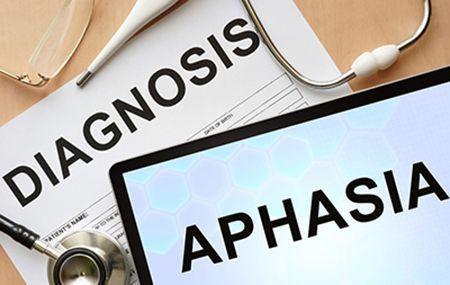June is Aphasia Awareness Month

What is aphasia?
Aphasia is a communication disorder that results from damage to the parts of the brain that contain language. Individuals who experience damage to the right side of the brain may have additional difficulties beyond speech and language issues. Aphasia may cause difficulties in speaking, listening, reading, and writing, but does not affect intelligence.
What causes aphasia?
Aphasia is most often caused by stroke. However, any disease or damage to the parts of the brain that control language can cause aphasia. These include brain tumors, traumatic brain injury, and progressive neurological disorders.
What are some signs or symptoms of aphasia?
Difficulty producing language:
- Have trouble coming up with the words they want to say
- Substitute the intended word with another word that may be related in meaning to the target
- Use made-up words
- Have difficulty putting words together to form sentences
- String together made-up words and real words fluently but without making sense
Difficulty understanding language:
- Misunderstand what others say, especially when they speak fast
- Find it hard to understand speech in background noise or in group situations
- Misinterpret jokes and take the literal meaning of figurative speech
- Difficulty reading and writing:
- Difficulty reading forms, pamphlets, books, and other written material
- Problems spelling and putting words together to write sentences
- Difficulty understanding number concepts
How is aphasia diagnosed
The speech-language pathologist evaluates the individual with a variety of tools to determine the type and severity of aphasia. It includes assessment of:
- Auditory Comprehension: understanding words, questions, directions, and stories
- Verbal Expression: producing automatic sequences, naming objects, describing pictures, responding to questions, and having conversations
- Reading and Writing: understanding or producing letters, words, sentences, and paragraphs
- Functional Communication: using gestures, drawing, pointing, or other supportive means of communication when he/she has trouble getting a point across verbally
What treatments are available for people with aphasia?
There are many types of treatment available for individuals with aphasia. The type of treatment depends on the needs and goals of the person with aphasia.
What can I do to communicate better with the person with aphasia?
1. Get the person’s attention before you start speaking.
2. Maintain eye contact and watch the person’s body language and use of gestures.
3. Minimize or eliminate background noise.
4. Keep your voice at a normal level.
5. Keep communication simple, but adult. Don’t “talk down” to the person with aphasia.
6. Simplify your sentence structure and emphasize keywords.
7. Give the individual time to speak. Resist the urge to finish sentences or offer words.
8. Communicate with drawings, gestures, writing, and facial expressions in addition to speech.
9. Encourage the person to use drawings, gestures, and writing.
10. Use yes and no questions rather than open-ended questions.
11. Engage in normal activities whenever possible.
12. Encourage independence and avoid being overprotective.



